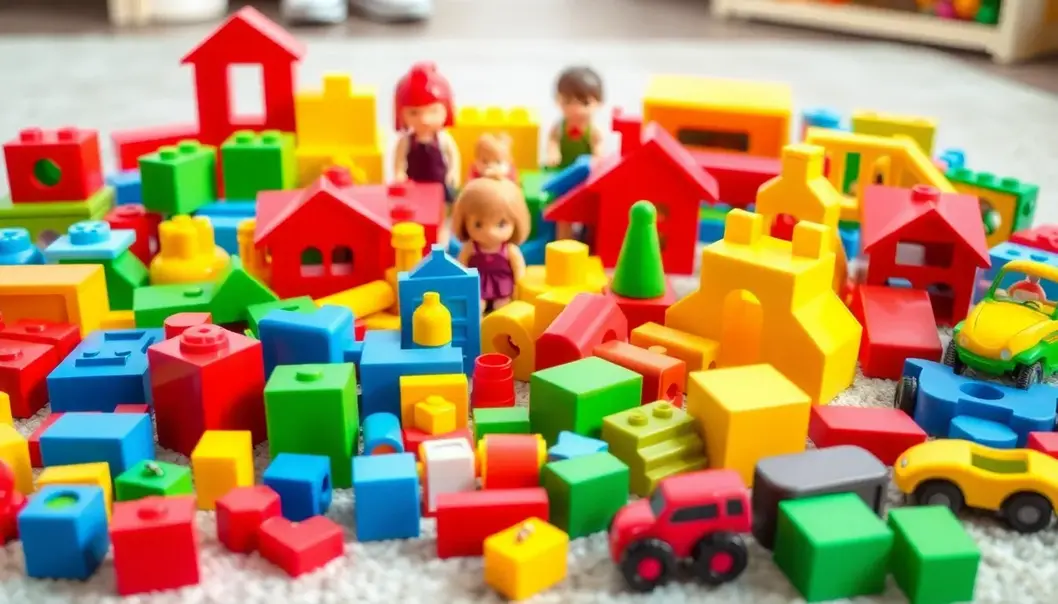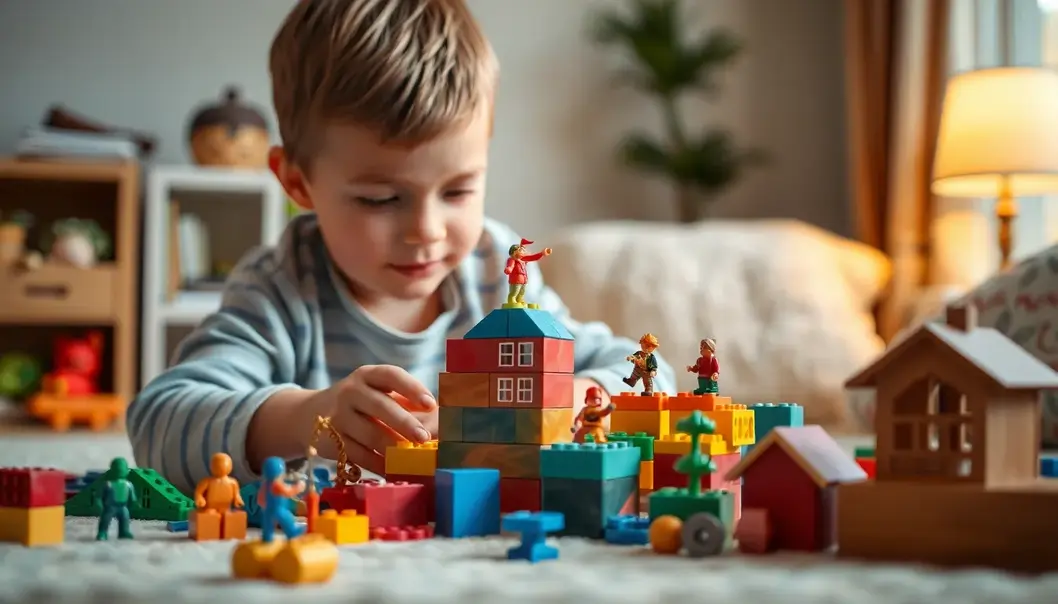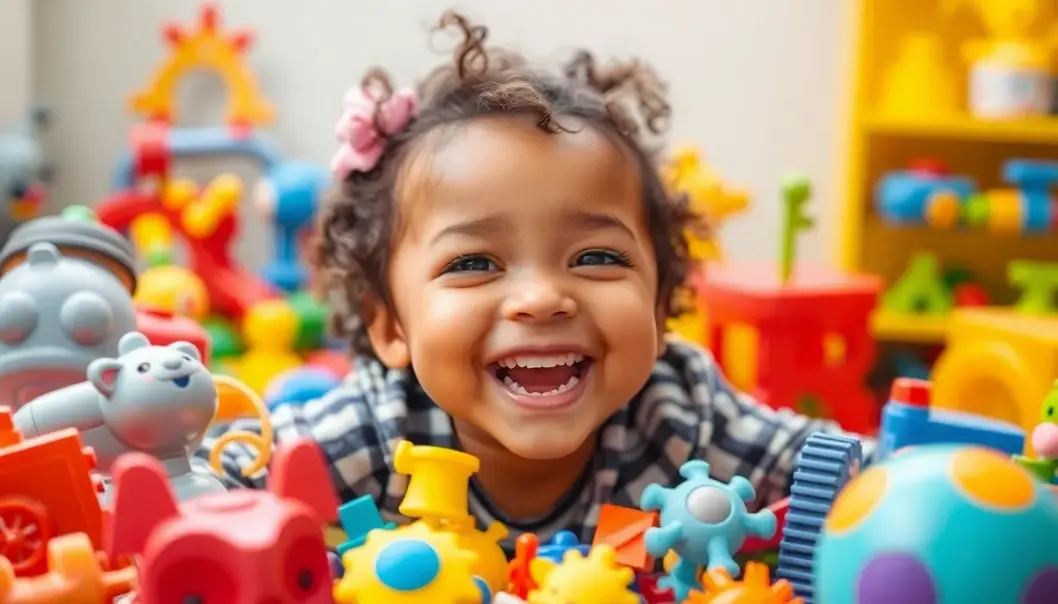Kids and toys go hand in hand, a timeless duo that transcends cultures and time periods. But what exactly is it about these colorful objects that captivate young minds? While adults may see a doll or a plastic truck, kids view them as magical portals to creativity and learning. Toys stimulate imagination and fuel cognitive development, making them integral to childhood. With playful designs and vibrant colors, toys offer endless possibilities for exploration. Let’s dive into the fascinating psychological factors that explain why kids are so irresistibly drawn to toys and how these playthings impact their growth and happiness.
The Magnetic Attraction: Colors and Shapes

The pull of colors and shapes on a child’s imagination forms the cornerstone of their fascination with toys. It’s not merely a matter of aesthetic appeal; rather, it taps into fundamental aspects of visual perception and cognition. For children, vibrant hues and distinctive shapes act like magnets, drawing them into a world brimming with possibilities.
From an early age, children are highly attuned to color. This predilection has evolutionary roots; colors in the environment act as visual cues that can signify safety, danger, or nourishment. Psychologist Jerome Bruner emphasized the significance of visual perceptions in learning, and toys leverage this by using an array of colors to capture attention instantly. Bright primary colors, in particular, are engaging because they are easily distinguishable, even for developing eyes. These hues stand out to children, creating a visual language that invites interaction and exploration.
Shapes, on the other hand, provide the tactile dimension that complements this vibrant spectrum. Infants and toddlers explore the world predominantly through sight and touch, making uniquely shaped toys crucial for cognitive development. The geometric diversity in toys—from the smoothness of spheres to the symmetry of cubes—stimulates spatial awareness and coordination. Jean Piaget’s theory on cognitive development postulates that manipulating various shapes helps children progress through developmental stages by providing essential sensory experiences.
The combination of colors and shapes in toys engages multiple senses simultaneously. This sensory engagement enriches the play experience, enhancing both memory retention and motor skills. For example, when a child encounters a toy with a striking color or an unusual shape, neurons in the visual cortex are activated, strengthening neural pathways associated with these perceptions. This stimulation sparks curiosity, encouraging the child to explore further.
Interactive designs amplify these effects by allowing children to alter shapes or observe color changes, adding a dynamic element to their play. Such toys encourage a form of active learning that can lay the groundwork for critical thinking and problem-solving skills. Moving pieces, changing colors, or adaptable shapes encourage children to ask “what if” questions, essential for cognitive advancement.
Understanding why colorful and uniquely shaped toys attract children provides us with valuable insights into their developmental priorities. These dimensions are not arbitrary design choices but are instead rooted in fundamental psychological principles that facilitate learning and engagement. Ultimately, toys serve as conduits through which children experiment with the world, making the harmonious blend of color and shape vital in cultivating an environment conducive to development and joy.
Imagination Unleashed: Role-Play and Creativity

The magic of play is most vividly captured when children’s toys offer them a canvas for imagination. Among the vast array of toys, those designed for role-play, such as dolls, action figures, and building blocks, stand out for their profound contributions to developmental milestones. These toys are more than just entertainment; they are instrumental in shaping essential cognitive and social skills, where imagination is both the starting point and the vehicle for deeper learning.
Role-play toys provide an open-ended playground where children can project their thoughts, fears, and dreams. When a child picks up a doll or an action figure, they begin to construct narratives that mirror or meander beyond their reality. Through storytelling, children enhance their vocabulary, string together complex sentences, and grasp the nuances of dialogue. This activity not only bolsters linguistic skills but also enriches emotional intelligence as they navigate roles that require understanding various perspectives.
Incorporating the theories of psychologists like Jean Piaget, we see that these imaginative play sessions can significantly bolster cognitive development. Piaget posited that children move through distinct stages, each characterized by increasingly sophisticated ways of understanding the world. Toys that promote creativity are particularly influential during the preoperational stage, where symbolic play is paramount. This type of play allows children to simulate real-world challenges and experiment with solving them, thereby fostering problem-solving skills essential for later life.
Equally important is the creativity that these toys unleash. Building blocks, for instance, are a quintessential tool for sparking original thought. As children connect blocks to construct towers or buildings, they are engaging in a process that requires foresight, logic, and spatial awareness. Each structure may also narrate a story known only to its creator, blending cognitive skill with imagination in a seamless dance.
From a social perspective, toys that encourage role-play enhance cooperative play skills. Often, these toys are shared in group settings, necessitating collaboration and negotiation. These interactions are crucial for developing empathy and learning the dynamics of teamwork. Children learn to assert, compromise, and collaborate, skills that are vital for social navigation.
Thus, when discussing the appeal of toys, it is crucial to recognize the immense value toys that encourage role-play bring to a child’s development. They are not mere objects of diversion but are pivotal in laying the groundwork for skills that will benefit children throughout their lives. Though the larger article continues to explore diverse aspects of toy appeal, by understanding the role of imagination in play, we glimpse the profound impact these playthings have on our youngest minds.
Final words
In conclusion, toys are more than just simple playthings; they are essential tools that fuel imagination, creativity, and learning in children. From their vibrant colors to their ability to inspire role-play, toys play a fundamental role in childhood development. As young adults and future parents, understanding the importance of toys can help us appreciate their influence and choose playthings that support children’s growth and happiness.
Discover our curated selection of educational toys that inspire creativity and development in kids. Enhance their playtime today!
Learn more: https://www.creativetoys.com
About us
Creative Toys offers a wide range of educational and imaginative toys designed to nurture creativity and cognitive development in children. With a focus on quality and innovation, our products aim to make learning fun and engaging, helping children unlock their full potential through play.

